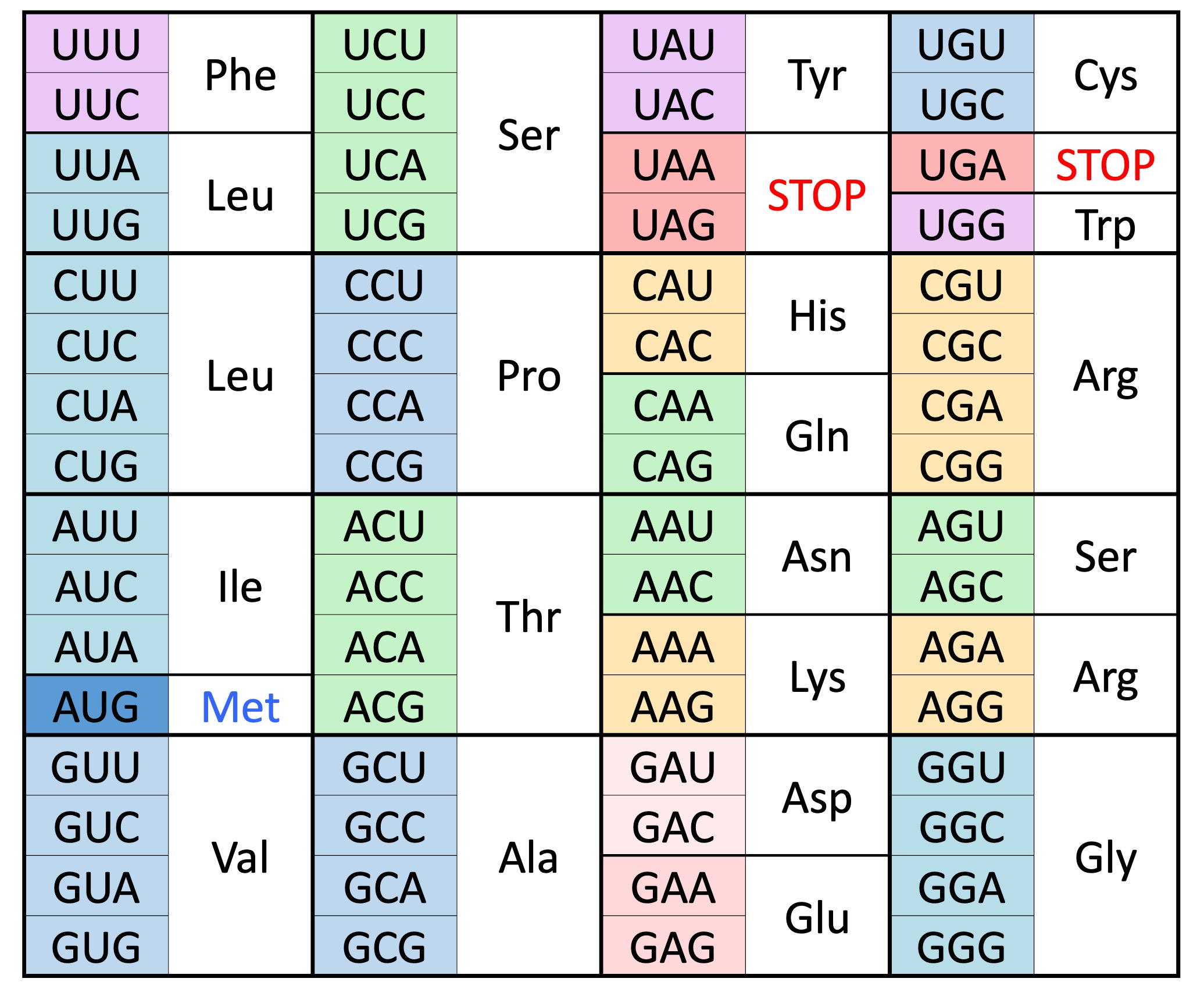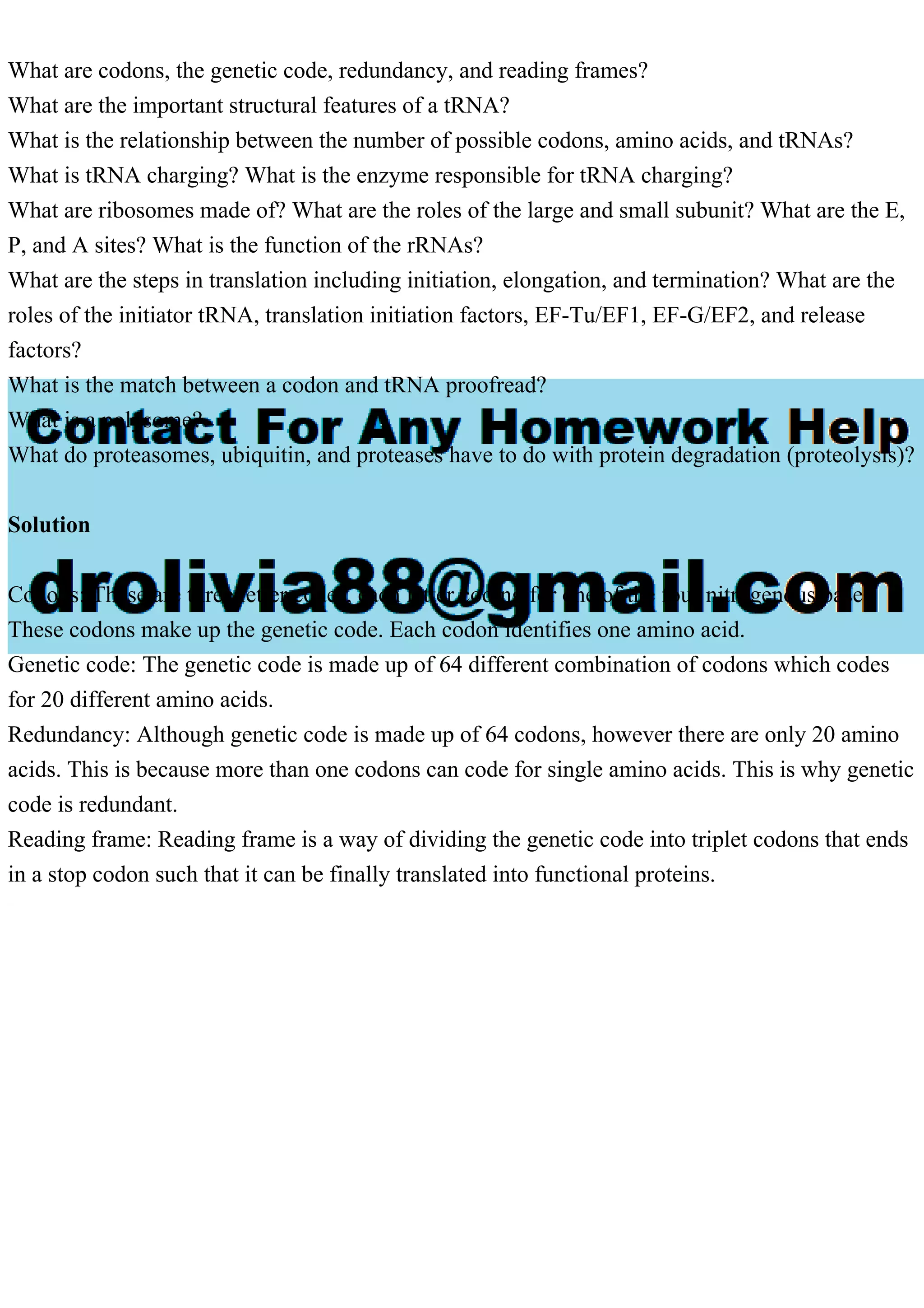Redundancy Of Genetic Code
The Genetic Code's Redundancy - A Biological Safety Net
Have you ever stopped to think about the incredible instructions that make up every living thing? It's like a secret language, a set of directions that tells our bodies, and indeed all life forms, how to build and operate. This amazing system, called the genetic code, is truly something to marvel at, and it has a clever trick up its sleeve: something we call "redundancy." This particular feature means there's a kind of built-in safety measure, a way for life to keep going even when small mistakes happen. It is, in a way, like having a backup plan already in place for some of the most important processes inside us.
Now, when we hear the word "redundancy" in everyday conversation, it often brings to mind things like someone losing their job because their role is no longer needed, or perhaps saying the same thing over and over again, which can be a bit much. It can also refer to having extra parts or systems just in case one fails, like the spare tire in your car, or maybe a backup generator. That's the general idea – having more than what's strictly necessary for a single purpose. But in the fascinating world of our cells, this concept takes on a truly remarkable and helpful meaning, especially when we talk about the basic instructions for life.
The genetic code, which basically tells our cells how to make proteins – the tiny workers that do so much inside us – uses this idea of having extra information. It's not about being wasteful; it's actually a very smart design. This means that, for example, a specific instruction, called a codon, will always point to one particular building block for a protein, known as an amino acid. However, here's the clever bit: that same amino acid can often be pointed to by several different codons. This setup, as a matter of fact, provides a protective layer, helping to keep things running smoothly even if there are small changes in the genetic instructions. It's a bit like having multiple ways to get to the same destination on a map.
Table of Contents
- What is Redundancy, Anyway?
- Redundancy Beyond the Genetic Code - A Quick Look
- How Does the Redundancy of Genetic Code Work?
- The Basics of Genetic Code Redundancy
- Why is Redundancy of Genetic Code So Important?
- The Protective Role of Genetic Code Redundancy
- Could There Be Different Kinds of Redundancy of Genetic Code?
- Exploring Variations in Genetic Code Redundancy
What is Redundancy, Anyway?
When we talk about something being redundant, we're really talking about a situation where there's more of something than what might seem strictly necessary. For instance, in everyday life, it could mean that a person loses their job because the company no longer has a need for that particular position. This is a common way we hear the word used, and it describes a situation where an employer simply doesn't need someone to do a certain job anymore. When this happens, there might be payments involved, like severance, to help the person who is leaving. So, it's about a role no longer being required by anyone, which, you know, can be a tough situation for those involved.
Redundancy Beyond the Genetic Code - A Quick Look
The idea of redundancy also shows up in other ways, beyond just jobs. For example, it can mean saying the same thing over and over again, or using words that basically repeat the same idea. Think of it like someone who just keeps on saying the same phrase when they are trying to explain something, which can be a bit much. It's about a repetition of information that's already there in the way a language is put together. Then there's the kind of redundancy where you have extra parts or duplicate systems in place. This is like having a spare engine on a ship, or maybe a backup power supply for a hospital. These extra bits are there to make sure things keep working, even if one part stops doing its job. This kind of planning is, in fact, pretty smart when you want things to be really dependable. It's all about having something extra, or a duplicate, just in case.
How Does the Redundancy of Genetic Code Work?
The genetic code is, at its heart, a triplet code. This means that groups of three basic building blocks, called nucleotides, come together to form what we call a codon. Each one of these codons acts like a specific instruction. It tells the cell which amino acid to add next when it's building a protein, or it can signal that it's time to stop making the protein. So, you have these three-letter "words" that spell out the instructions for life. For example, the codon 'UUU' tells the cell to use a specific amino acid. This system is how all the amazing variety of proteins, which do so much work in our bodies, get put together. It's a very precise system, and, in a way, it's quite elegant in its simplicity.
The Basics of Genetic Code Redundancy
Now, here's where the clever bit about the redundancy of genetic code comes in. While each specific codon codes for only one particular amino acid, it's also true that a single amino acid can be coded for by several different codons. This means that there are more of these three-letter "words" than there are different amino acids. For instance, if you look at a chart of the genetic code, you'll see that, say, the amino acid threonine is specified by four different codons. This feature, where most amino acids are pointed to by more than one messenger RNA (mRNA) codon, is what we mean by the genetic code being redundant. It's like having multiple phone numbers that all ring the same person. This characteristic is sometimes also called "degeneracy," and it's a very important aspect of how our biological instructions are put together. It's definitely a core part of how things operate.
Why is Redundancy of Genetic Code So Important?
The fact that the genetic code has this built-in redundancy is incredibly important for living things. Think about it: if every single codon had to point to a unique amino acid, any small mistake or change in the genetic instructions could have really big, perhaps even disastrous, consequences. But because multiple codons can point to the same amino acid, there's a kind of buffer. If a change happens in one of the letters of a codon, it might still end up coding for the same amino acid, or at least a very similar one. This means the protein that gets made might still work just fine, or work well enough. This protective setup helps keep the critical functions of organisms running smoothly, even when little errors pop up. It's a bit like having a spell-checker that can fix a typo before anyone even notices. This is, in fact, a key reason why life can be so resilient.
The Protective Role of Genetic Code Redundancy
This protective aspect of genetic code redundancy is a big deal for the stability of life over long periods. It helps to keep the meaning of proteins from getting messed up. If, for example, a human engineer were to design the genetic code, they would likely want to make sure that each amino acid had a similar amount of this extra coding capacity. This would be to help protect against errors and to make sure the system works well. The phenomenon where multiple codons point to the same amino acid leads to a mechanism that protects against changes, or mutations. The "wobble hypothesis" also helps us get a better sense of this variation in the genetic code, where, as we've discussed, several codons can specify the same amino acid. This means that even with slight variations in the genetic message, the correct protein building block can still be called upon. It truly helps keep things stable, you know, over generations.
Could There Be Different Kinds of Redundancy of Genetic Code?
When people talk about "genetic redundancy," the term itself has been used in a few different ways over time. For example, as far back as the 1960s, this term was sometimes used to describe situations where there were instances of gene duplication. This is where a whole gene gets copied, so you end up with two copies instead of just one. While this is a form of redundancy in a broader sense, meaning there's extra genetic material, it's a bit different from the specific way we've been talking about the genetic code itself, where multiple codons point to the same amino acid. So, the word "redundancy" can have a slightly different flavor depending on whether you're talking about whole genes or the tiny instructions within the code. It's a subtle distinction, but an important one, as a matter of fact.
Exploring Variations in Genetic Code Redundancy
The genetic code is often described as being universal, meaning that almost every living organism uses the same basic set of rules. However, there are some very slight variations, or "alternative codes," that exist. The redundancy of the genetic code actually helps make room for these alternative codes without messing up the really important jobs that organisms need to do to stay alive. It's like having a system that's flexible enough to allow for a few different dialects, but still keeps the main message clear. This ability to accommodate slight differences, while still keeping the core meaning of protein instructions intact, is quite remarkable. It shows that the system is not rigid, but rather has a degree of flexibility that allows for some natural variation without causing big problems. It's really quite clever how it all works out, actually.
In short, the genetic code is a triplet code where three nucleotides make up a codon, and each codon points to one amino acid or a stop signal. This code is redundant because many amino acids are pointed to by more than one codon. This setup is incredibly important because it acts like a protective shield against changes, or mutations, in the genetic instructions. It means that even if a small mistake happens in the code, the resulting protein might still be made correctly, or at least in a way that allows the organism to keep functioning. This characteristic also contributes to the stability of life's instructions over time and can even make room for slight variations in the code itself. It's a fundamental part of how life manages to be so resilient and adaptable.

Redundancy in the genetic code refers to- The fact that the code for m.docx

Genetic Code

What are codons, the genetic code, redundancy, and reading frames.pdf